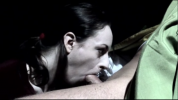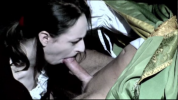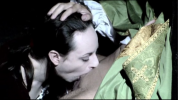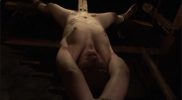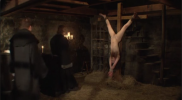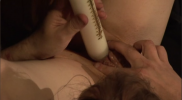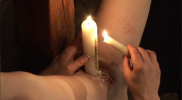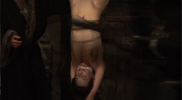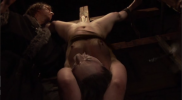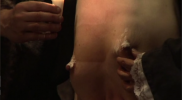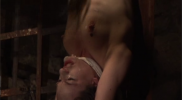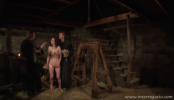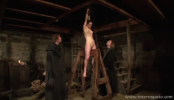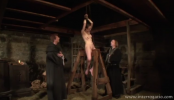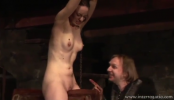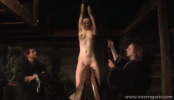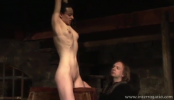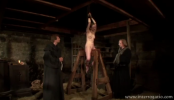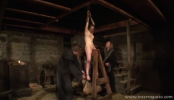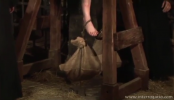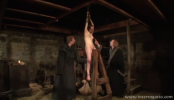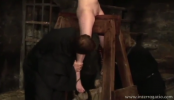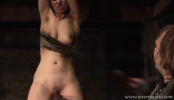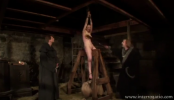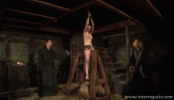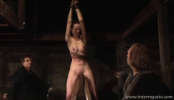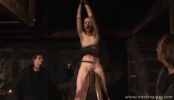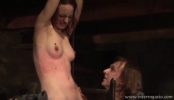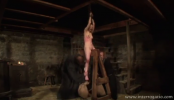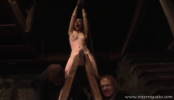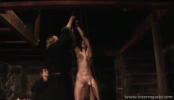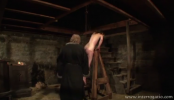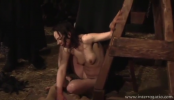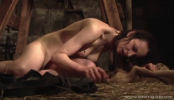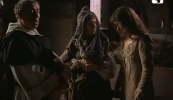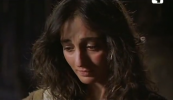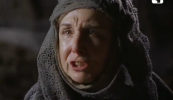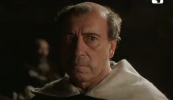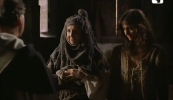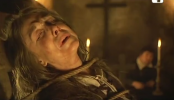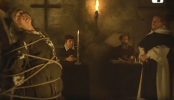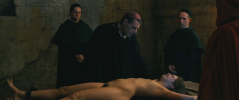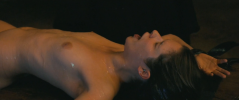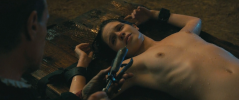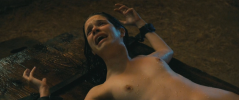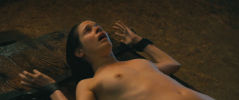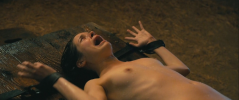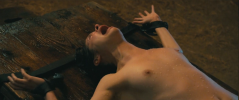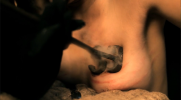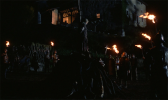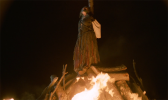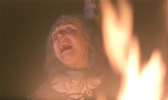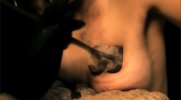Rupert_137
Governor
Zugarramurdi
I hope this exciting story continues beyond the unfortunate young woman's first confession!
If I remember correctly, Garazi is finally freed by her friend and his followers in the 1984 film Akelarre (Coven of Witches, Witches' Sabbath) ... but in historical reality it was different. Because the witch hunts of Zugarramurdi really existed. But of course this story does not have to stick to the course of the film or the complicated historical reality...
Out of interest in the historical background, I did a little research and maybe you are interested in it too.
The following can be found on the Internet for the place name Zugarramurdi:
Zugarramurdi in the mountains of Navarre stands for witch hunts, sorcery, myths and legends. Only 400 m from the village is the Olabidea stream, which, according to its Basque name, has its source in Hell (Infernuku erhka). The small river has dug a 120 m long and up to 12 m high tunnel here. Behind the tunnel-like cave entrance, a staircase leads down to the largest hall in the cave. The "Akelarres" or Coven of Witches are said to have taken place there. With the presence of the devil included…
It is not documented whether the dances of naked witches around the campfire and the rituals actually took place or were an invention of the Inquisition. One thing is certain: the inquisition judges ruthlessly persecuted, accused and tortured the residents of Zugarramurdi.
In 1610 they tried 31 local citizens - mostly women (about a fifth of the population of Zugarramurdi without children). They have been accused of witchcraft and their names are on a plaque at the entrance to the cave (pictures). Some survived after acknowledging their guilt and asking for forgiveness, but 13 died during the torture they suffered in Logroño prison (in what is now Rioja, on the Camino de Santiago). The remaining six burned alive at the market square there in front of a huge crowd.
So there were 31 accused of witchcraft; 12 who were forgiven after torture and confession (as also indicated here in this story); 13 who died during the extremely brutal torture , but only 6 who were burned alive as stubborn witches.

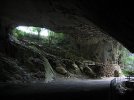
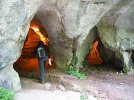
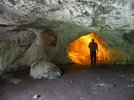
Historical Outlook:
At the end of May 1611, the commissioner Alonso de Salazar y Frías left his office at the court of the Holy Inquisition in Logroño and went to the north of Navarre. Startled by the events in Zugarramurdi in 1610, he was supposed to end “the witch plague” that allegedly affected the entire region. Nobody could have guessed the scope of his investigations. Salazar was a more rational person, not one of those religious zealots of which there were so many at the time. He was looking for concrete evidence of the sometimes insane allegations that were going around. But he found no tangible evidence, let alone any real proof.
His investigations, however, uncovered many falsehoods and false statements, fantasies inspired by the witch madness and lies forced under torture. Alleged witch powder for flying turned out to be flour; most allegations were quickly withdrawn after detailed questioning of the informers. The results of his work actually led to an early end to the witch hunts in Spain, where only about 30 victims were counted who were actually burned for witchcraft - fewer than in almost every other country in Europe. It is inconceivable what could have happened if one of the zealots and not the rational Salazar had been entrusted with this task...
In the widespread witch stories, which are often set in Spain, this fact is mostly ignored. Again and again you may read there that the Spanish Inquisition was particularly bad - yes, in the relentless pursuit of alleged heresy, but certainly not in the pursuit of witches.
But this historical change didn't help Garazi or Unai anymore...
I hope this exciting story continues beyond the unfortunate young woman's first confession!
If I remember correctly, Garazi is finally freed by her friend and his followers in the 1984 film Akelarre (Coven of Witches, Witches' Sabbath) ... but in historical reality it was different. Because the witch hunts of Zugarramurdi really existed. But of course this story does not have to stick to the course of the film or the complicated historical reality...
Out of interest in the historical background, I did a little research and maybe you are interested in it too.
The following can be found on the Internet for the place name Zugarramurdi:
Zugarramurdi in the mountains of Navarre stands for witch hunts, sorcery, myths and legends. Only 400 m from the village is the Olabidea stream, which, according to its Basque name, has its source in Hell (Infernuku erhka). The small river has dug a 120 m long and up to 12 m high tunnel here. Behind the tunnel-like cave entrance, a staircase leads down to the largest hall in the cave. The "Akelarres" or Coven of Witches are said to have taken place there. With the presence of the devil included…
It is not documented whether the dances of naked witches around the campfire and the rituals actually took place or were an invention of the Inquisition. One thing is certain: the inquisition judges ruthlessly persecuted, accused and tortured the residents of Zugarramurdi.
In 1610 they tried 31 local citizens - mostly women (about a fifth of the population of Zugarramurdi without children). They have been accused of witchcraft and their names are on a plaque at the entrance to the cave (pictures). Some survived after acknowledging their guilt and asking for forgiveness, but 13 died during the torture they suffered in Logroño prison (in what is now Rioja, on the Camino de Santiago). The remaining six burned alive at the market square there in front of a huge crowd.
So there were 31 accused of witchcraft; 12 who were forgiven after torture and confession (as also indicated here in this story); 13 who died during the extremely brutal torture , but only 6 who were burned alive as stubborn witches.




Historical Outlook:
At the end of May 1611, the commissioner Alonso de Salazar y Frías left his office at the court of the Holy Inquisition in Logroño and went to the north of Navarre. Startled by the events in Zugarramurdi in 1610, he was supposed to end “the witch plague” that allegedly affected the entire region. Nobody could have guessed the scope of his investigations. Salazar was a more rational person, not one of those religious zealots of which there were so many at the time. He was looking for concrete evidence of the sometimes insane allegations that were going around. But he found no tangible evidence, let alone any real proof.
His investigations, however, uncovered many falsehoods and false statements, fantasies inspired by the witch madness and lies forced under torture. Alleged witch powder for flying turned out to be flour; most allegations were quickly withdrawn after detailed questioning of the informers. The results of his work actually led to an early end to the witch hunts in Spain, where only about 30 victims were counted who were actually burned for witchcraft - fewer than in almost every other country in Europe. It is inconceivable what could have happened if one of the zealots and not the rational Salazar had been entrusted with this task...
In the widespread witch stories, which are often set in Spain, this fact is mostly ignored. Again and again you may read there that the Spanish Inquisition was particularly bad - yes, in the relentless pursuit of alleged heresy, but certainly not in the pursuit of witches.
But this historical change didn't help Garazi or Unai anymore...



